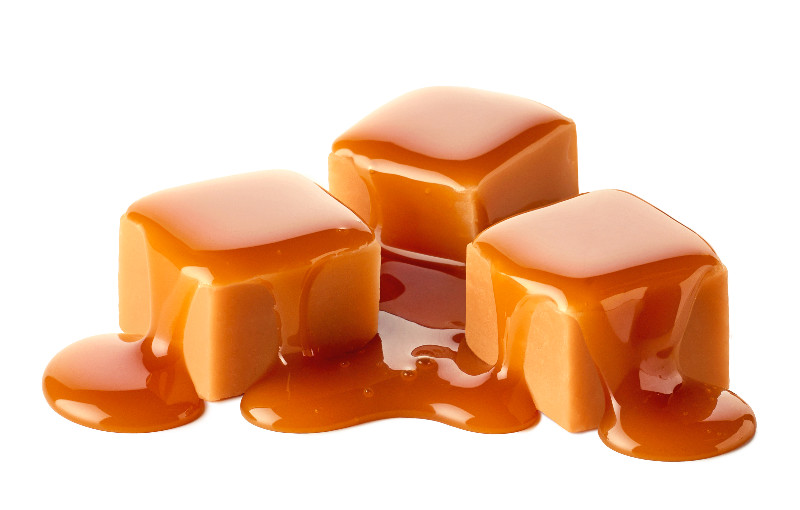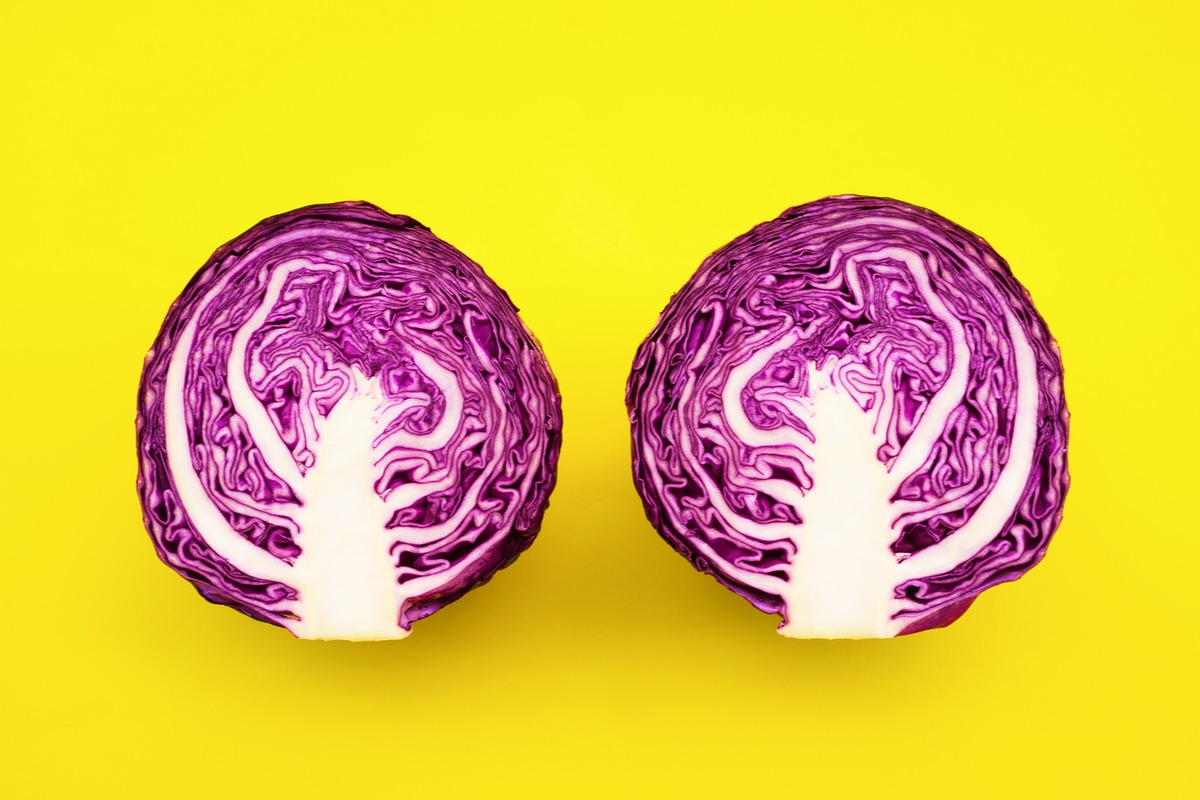There’s no scotch whisky in the recipe, so what’s up with the name? We have answers.
Imagine you’re walking through the baking aisle at the supermarket and stop in front of the dessert morsel section. You’re usually presented with a spectrum of options to bake with, melt, or enjoy by the handful. These echo popular ice cream parlor topping or dip cone flavors: chocolate, white chocolate, caramel, toffee, cherry, mint-chocolate, and butterscotch.
You’re probably well-versed in the world of white chocolate and milk or dark chocolate. But could you answer if someone asked you, “what is butterscotch?” Readers have written in asking us just this question, so we tapped a couple food pros to answer.
What is Butterscotch?
A close cousin to caramel, butterscotch is a less fussy confection that can come in the form of a sauce, morsel, or hard candy, explains Sarah Brekke, M.S., Better Homes & Gardens Test Kitchen brand manager. The main ingredients in butterscotch include butter, brown sugar (which lends a hint of molasses flavor), and sometimes cream.
“Butterscotch smells and tastes like sweet dairy with a hint of minerality and bitterness from the molasses in the brown sugar,” says Tessa Porter, the Omaha, Nebraska-based founder of Sprinkk, a confectionery product development company.
How Did Butterscotch Get Its Name?
Yes, there’s butter in the recipe. But what’s up with the -scotch portion of the name? We’ll cut to the chase: classic modern-day butterscotch recipes don’t call for any Scotch whisky, and there’s no record that the creation ever did.
Food historians are uncertain about exactly when and how this sweet treat earned its name, Brekke says: “Although no one knows for sure, it’s believed that the name combines the main ingredient, ‘butter,’ with the word ‘scotch.’ In Scotland, ‘scotching’ or ‘scotched,’ means cutting or scoring the slab of candy before it hardens so that it can be cleanly broken once fully cooled and brittle.”
Some etymologists have suggested that “scotch” could also be a spin-off of scorched, hinting at the butterscotch-making process that involves butter and sugar being cooked over high heat. The “scotch” part of the moniker could also be a nod to the location where butterscotch was first created – Scotland – rather than relating to the formula, Porter adds.
What Makes Butterscotch Different From Caramel, Toffee, and Dulce de Leche?
All four of these dessert recipes rely on sugar, fat, dairy, and caramelization, “but the ratios of ingredients, degree of caramelization, and texture of the end products vary widely,” Brekke confirms.
The flavor of butterscotch is similar to caramel, but it’s milder, sweeter, and slightly less caramelized-tasting; which can translate as being less bitter, according to Brekke. That being said, the technique for making butterscotch is “more streamlined and avoids some of the steps where the caramel-making process can go wrong for home cooks,” Brekke adds. Plus, “in its truest form, as a hard candy, butterscotch doesn’t contain cream, while caramel does.”
Here’s how butterscotch is different from caramel, toffee, and dulce de leche.
- Caramel: White sugar and water, and sometimes corn syrup, set the stage for homemade caramel. To make it, you’ll boil those ingredients until they transform into an amber-colored syrup. At this point, the caramel is technically at the “brown liquid stage,” which occurs at 338°F. “Depending on the specific recipe, you’ll add heavy cream, small amounts of butter, and vanilla, resulting in a gooey caramel sauce or soft caramels,” Brekke says.
- Toffee: By cooking butter and white sugar until they reach the “hard crack stage” of 300° to 310° F, you’ll be treated to homemade toffee. From there, pour the mixture into a pan until it hardens into a brittle slab, and then break it into pieces to enjoy as candy. As for toffee sauce, that typically calls for brown sugar, butter, cream, and vanilla. Toffee is essentially the same as a “granulated sugar butterscotch,” that’s been cooked to a slightly higher temperature. (Butterscotch is cooked to the “soft crack stage” of 270° to 290° F.)
- Dulce de Leche: This is essentially caramelized milk. To make homemade dulce de leche, you’ll need to stand over the stove and stir sugar and milk as they thicken and turn golden brown, which can take hours. Homemade dulce de leche is a very time-intensive process, so our Test Kitchen often relies on a trick: Boiling a label-removed can of sweetened condensed milk in water for 3 hours, so stirring and constant monitoring isn’t required. Just be sure to keep the can covered with water at all times, and use tongs and a lot of TLC as you remove the extremely hot can from the pot.
The Best Butterscotch Substitutes
Now that you know how all of those sugary siblings relate, you might be wondering what’s the best substitute for butterscotch if you run out or can’t find it. Consider one of these savvy swaps:
- Hard butterscotch substitute: Hard toffee candy is your best alternative.
- Butterscotch sauce substitute: Spike your caramel sauce with a dash of molasses, to taste, Porter recommends.
- Butterscotch chips substitute: Caramel chips are a suitable replacement. Just note that “caramel morsels will deliver different butter and caramelization notes,” Brekke says.
Our Best Butterscotch Recipes
Our Test Kitchen has perfected foolproof butterscotch dessert recipes that range from birthday party-ready (Applicious Cider Cake with Butterscotch Frosting, Butterscotch Marble Cake) to bake sale and potluck-friendly (No-Bake Butterscotch Bars, Scotcheroos), to holiday-worthy (fans verify that this Brown-Bottom Butterscotch Cashew Cream Pie gets “rave reviews and requests for more.”)
Porter and Brekke reveal even more butterscotch recipe ideas that you can run with:
- Swirl butterscotch sauce into brownie batter before baking
- Blend up a butterscotch malt
- Layer butterscotch sauce with pudding or custard for a butterscotch budino
- Drizzle butterscotch sauce over grilled pineapple, bread pudding, or pound cake
- Sprinkle butterscotch candy or morsels over ice cream or use butterscotch sauce as a sundae topping
- Feature butterscotch sauce as a layer in ice cream cake
- Stir a spoonful into cream soda and top with a dollop of whipped cream for DIY butter beer
This article was written by Karla Walsh from Better Homes and Gardens and was legally licensed through the DiveMarketplace by Industry Dive. Please direct all licensing questions to legal@industrydive.com.







